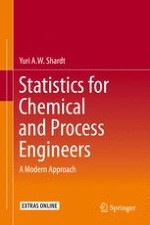2015 | OriginalPaper | Buchkapitel
5. Modelling Stochastic Processes with Time Series Analysis
verfasst von : Yuri A. W. Shardt
Erschienen in: Statistics for Chemical and Process Engineers
Aktivieren Sie unsere intelligente Suche, um passende Fachinhalte oder Patente zu finden.
Wählen Sie Textabschnitte aus um mit Künstlicher Intelligenz passenden Patente zu finden. powered by
Markieren Sie Textabschnitte, um KI-gestützt weitere passende Inhalte zu finden. powered by
